There’s something magical about driving through small-town America and spotting a grand courthouse sitting right in the heart of everything. These aren’t just government buildings — they’re the beating heart of communities that grew up around them. Back in the day, when a county needed a courthouse, entire towns would spring up around these impressive structures, creating some of the most charming and historically rich places you can visit today.
These courthouse towns tell the story of American expansion, justice, and community building in ways that history books simply can’t capture. From the rolling hills of Texas to the plains of Kansas, these architectural gems have watched over generations of families, witnessed countless trials, and served as gathering places for everything from political rallies to weekend farmers markets.
Here is a list of 14 towns that were built around their historic courthouses, each with its own unique character and fascinating backstory.
Georgetown, Texas
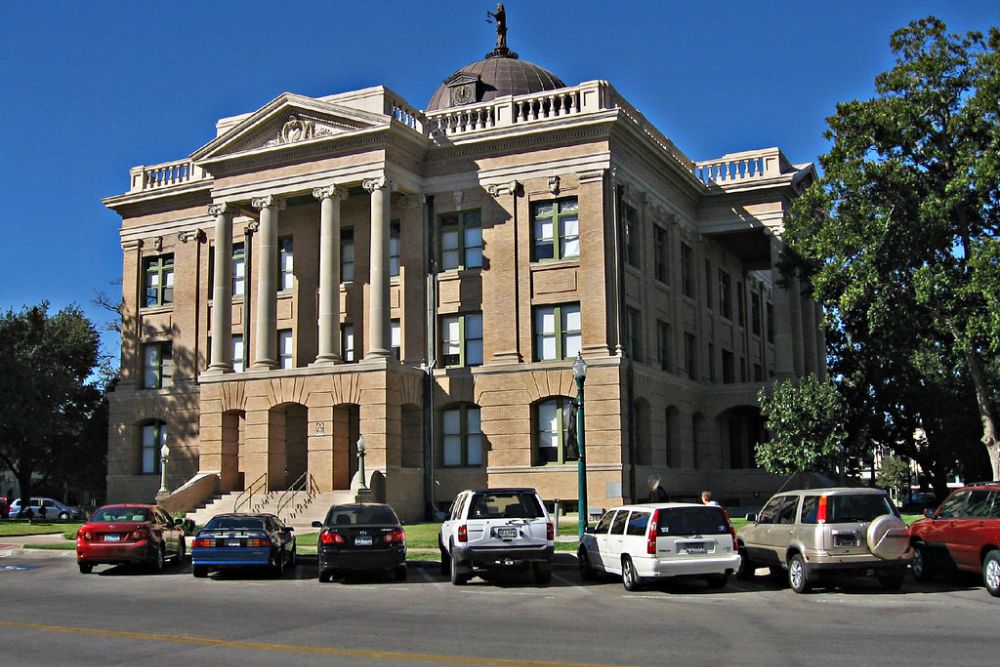
Georgetown’s courthouse square represents one of Texas’s most beautiful examples of courthouse-centered town planning. Built in 1911, the limestone courthouse with its distinctive clock tower has anchored the town square for over a century.
The courthouse’s pale stone construction perfectly matches the local limestone quarries that helped build much of early Georgetown. Today, the square bustles with antique shops, restaurants, and seasonal festivals that draw visitors from across central Texas.
Granbury, Texas
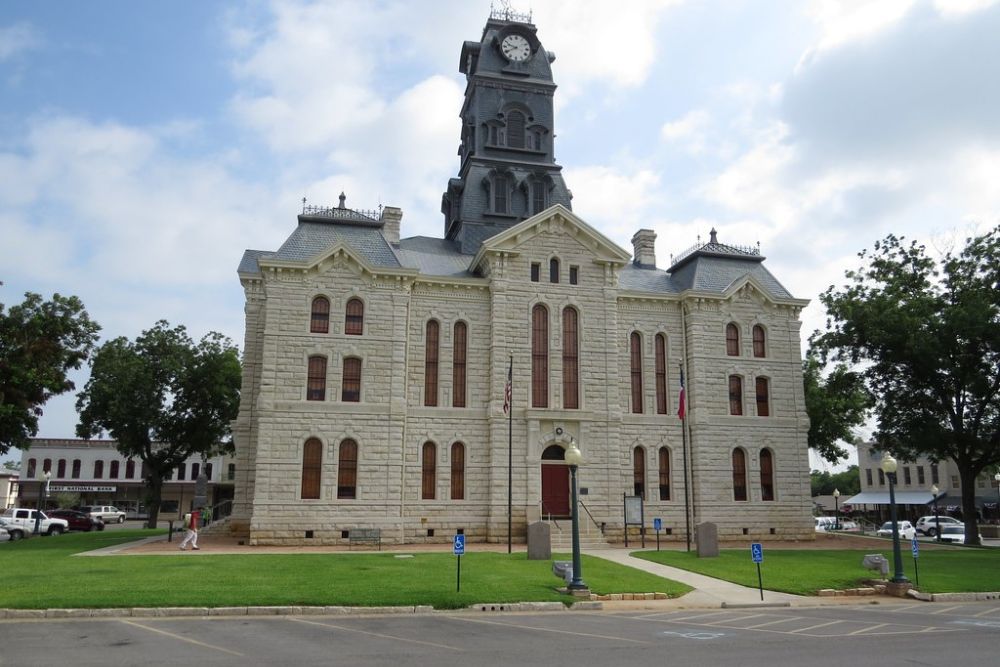
Granbury’s courthouse square feels like stepping back into the 1800s, and that’s exactly the point. The 1891 courthouse, with its Second Empire architecture and mansard roof, sits at the center of a perfectly preserved town square that’s been carefully maintained to preserve its historic charm.
The courthouse served as the backdrop for several movies, including parts of ‘The Best Little Whorehouse in Texas.’ Walking around the square today, you’ll find the same basic layout that settlers established when they first platted the town around this impressive structure.
Like Travel Pug’s content? Follow us on MSN.
Weatherford, Texas
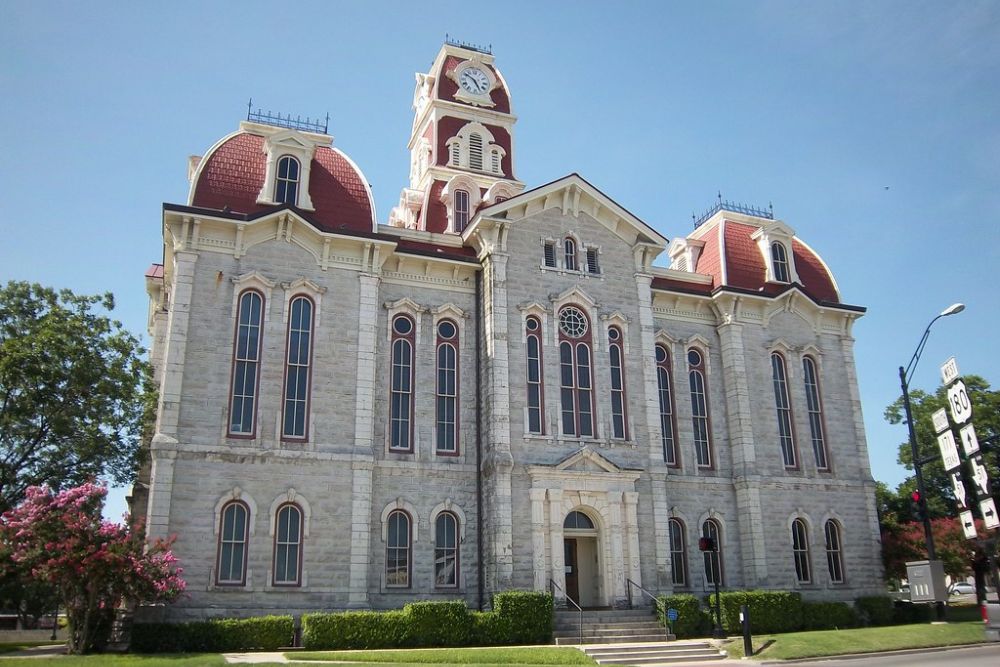
The Parker County Courthouse in Weatherford stands as a testament to the grand courthouse architecture of the late 1800s. Completed in 1886, this Second Empire-style building with its towering clock tower became the natural center point around which the town developed.
The courthouse square methodology worked so well here that Weatherford grew from a small settlement into the county seat and eventual home to Weatherford College. The building’s restoration in recent decades has kept it functioning as both a working courthouse and a symbol of the town’s heritage.
Decatur, Texas
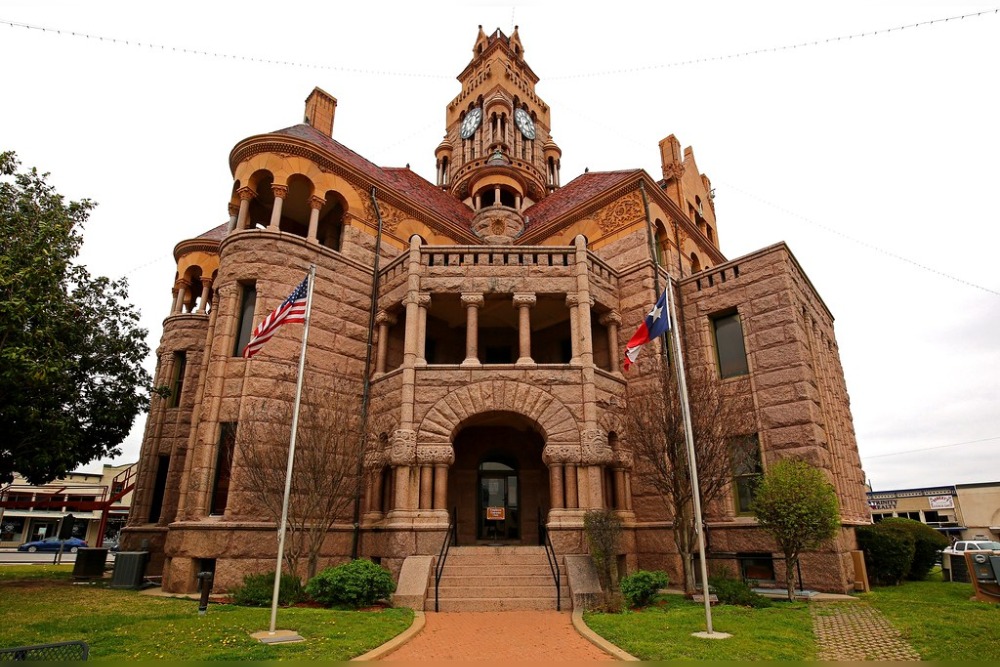
Decatur’s red sandstone courthouse creates one of the most striking courthouse squares in North Texas. Built in 1896, the Romanesque Revival structure draws attention with its castle-like appearance and prominent corner tower. The town’s founders specifically chose this elevated site for maximum visibility, and businesses naturally clustered around the courthouse to serve both county business and the growing residential areas.
The courthouse square remains the town’s commercial heart, hosting everything from the annual Chisholm Trail Days to weekly farmers markets.
Hillsboro, Texas
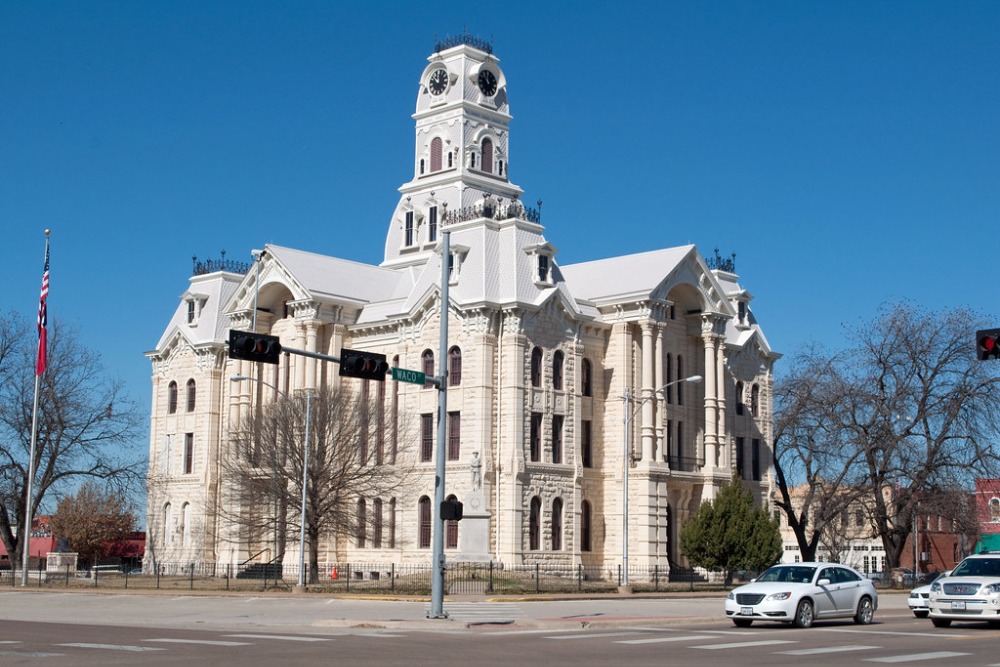
The Hill County Courthouse in Hillsboro represents the ambitious courthouse-building projects of the late 1800s. Constructed in 1890, this limestone courthouse with its elaborate clock tower became the focal point for a town that was already growing thanks to the railroad.
The courthouse square layout encouraged businesses to locate within walking distance of county offices, creating a compact downtown area that still thrives today. The building’s restoration and continued use as a working courthouse keep it at the center of Hillsboro’s civic life.
Like Travel Pug’s content? Follow us on MSN.
Gainesville, Texas
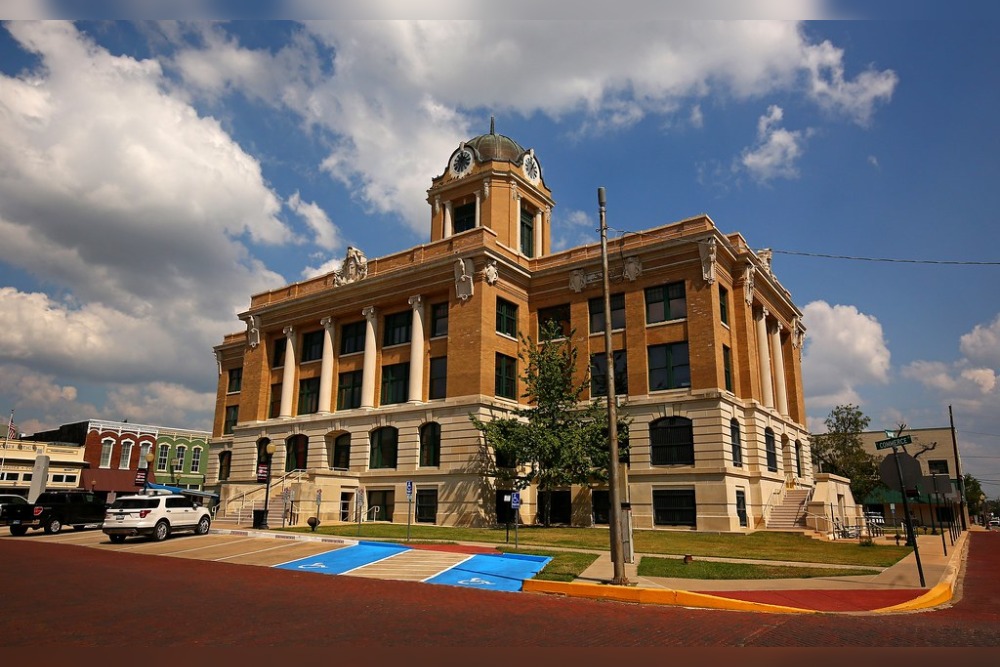
Gainesville’s courthouse square showcases how these civic buildings could shape entire communities. The current courthouse, built in 1987, replaced an earlier structure but maintained the traditional courthouse square layout that has defined Gainesville since the 1850s.
The square’s design encouraged radial development, with streets extending outward from the courthouse like spokes on a wheel. This pattern created distinct neighborhoods while keeping the courthouse as the town’s central reference point, a layout that visitors can still clearly see today.
Denton, Texas
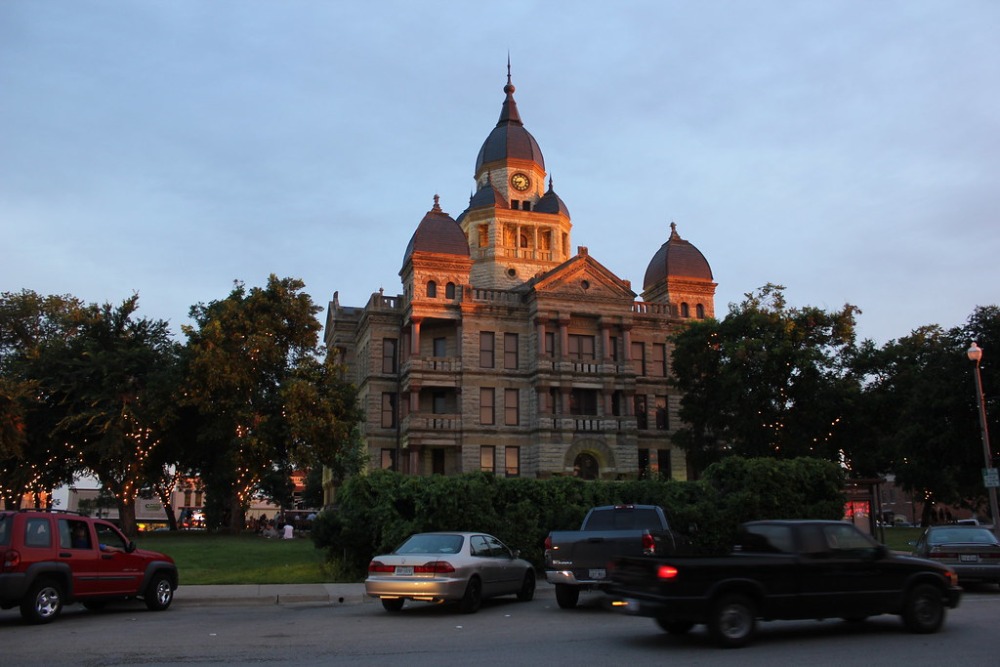
The Denton County Courthouse commands attention with its impressive limestone construction and distinctive architecture. Built in 1896, this courthouse became the natural center for a town that would eventually grow to include two major universities.
The courthouse square served as the commercial heart of early Denton, with businesses arranging themselves around the square to serve both county business and the growing population. The building’s location on a slight hill made it visible from considerable distances, helping establish Denton’s identity across the region.
Waxahachie, Texas
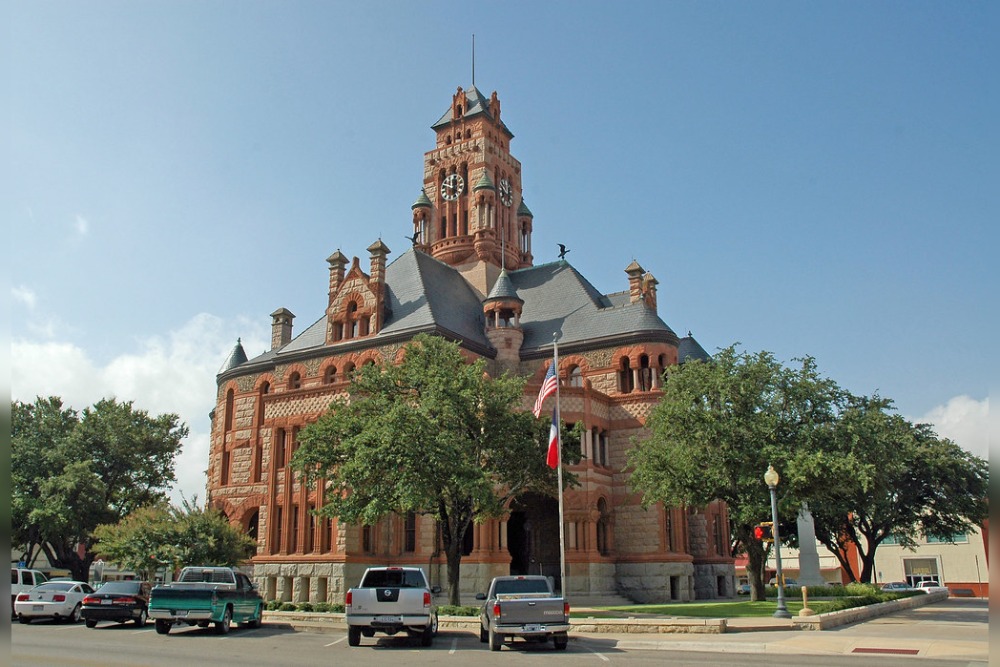
Waxahachie’s Ellis County Courthouse stands as one of the most photographed courthouses in Texas, and for good reason. This 1897 Romanesque Revival masterpiece, with its elaborate stonework and towering presence, became the centerpiece around which the entire town organized itself. The courthouse’s dramatic architecture attracted businesses and residents who wanted to be associated with such an impressive civic symbol.
The town’s historic downtown district, which radiates outward from the courthouse square, remains largely intact and serves as a popular filming location for period movies.
Like Travel Pug’s content? Follow us on MSN.
Canton, Texas
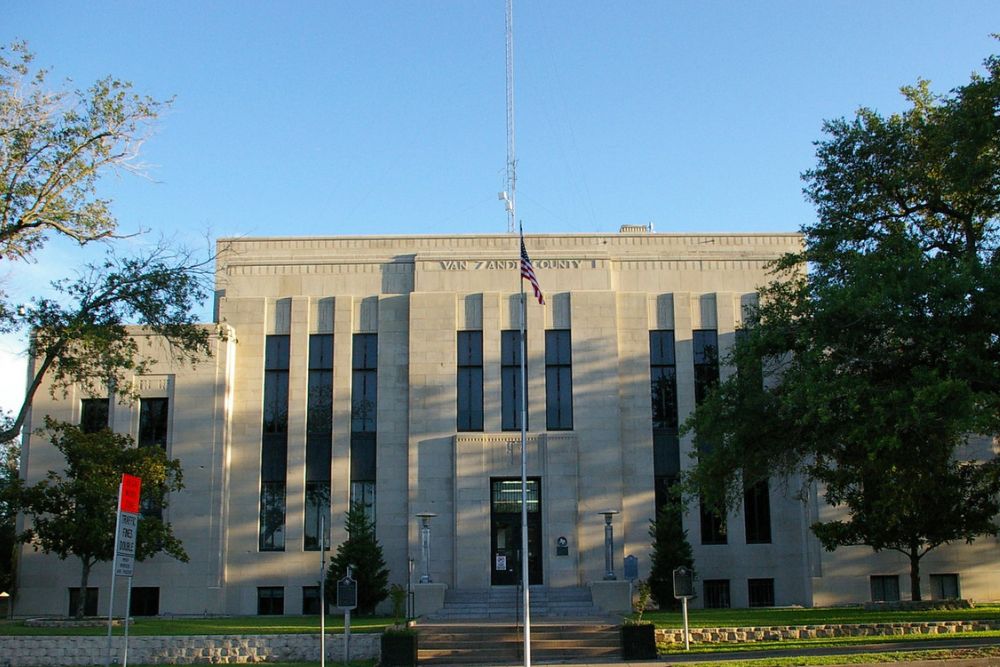
Canton’s courthouse square represents the classic small-town Texas courthouse community. The Van Zandt County Courthouse, built in 1894, sits at the center of a town that grew up specifically to serve county government functions. The courthouse’s placement created a natural gathering point that encouraged business development on all four sides of the square.
Today, Canton is famous for its monthly First Monday Trade Days, which transform the courthouse square and surrounding areas into one of the largest flea markets in the United States.
Marshall, Texas
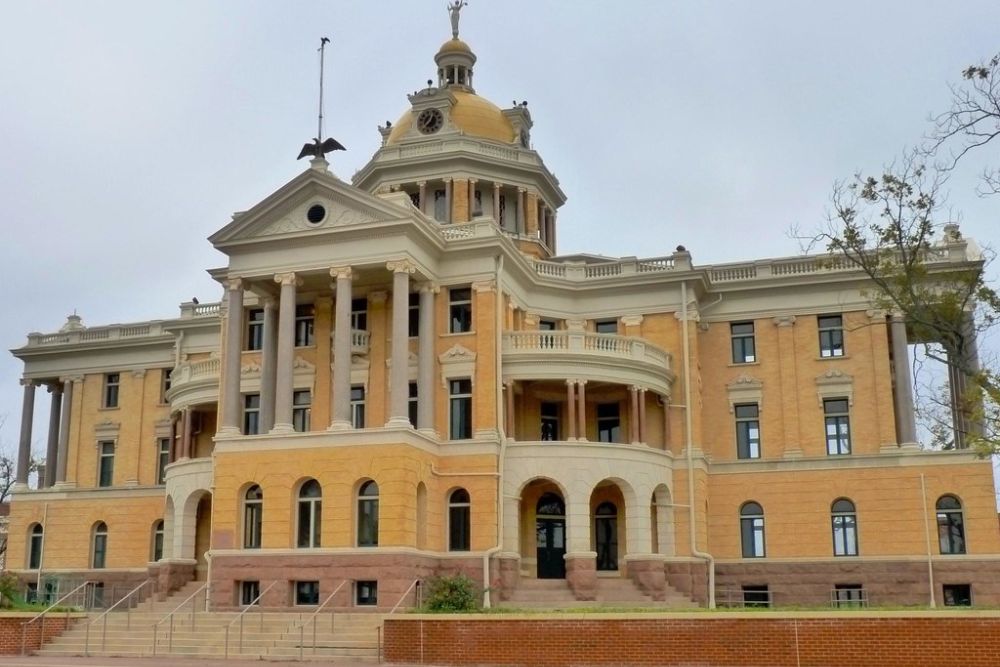
The Harrison County Courthouse in Marshall demonstrates how courthouse architecture could reflect a community’s aspirations and prosperity. Built in 1964, this modern courthouse replaced earlier structures but maintained the traditional courthouse square concept that has defined Marshall since the 1840s.
The courthouse square layout helped establish Marshall as an important East Texas commercial center, with businesses clustering around the square to serve both county functions and the railroad traffic that made the town prosperous. The courthouse remains the civic heart of a community that has carefully preserved its historic character.
Bastrop, Texas
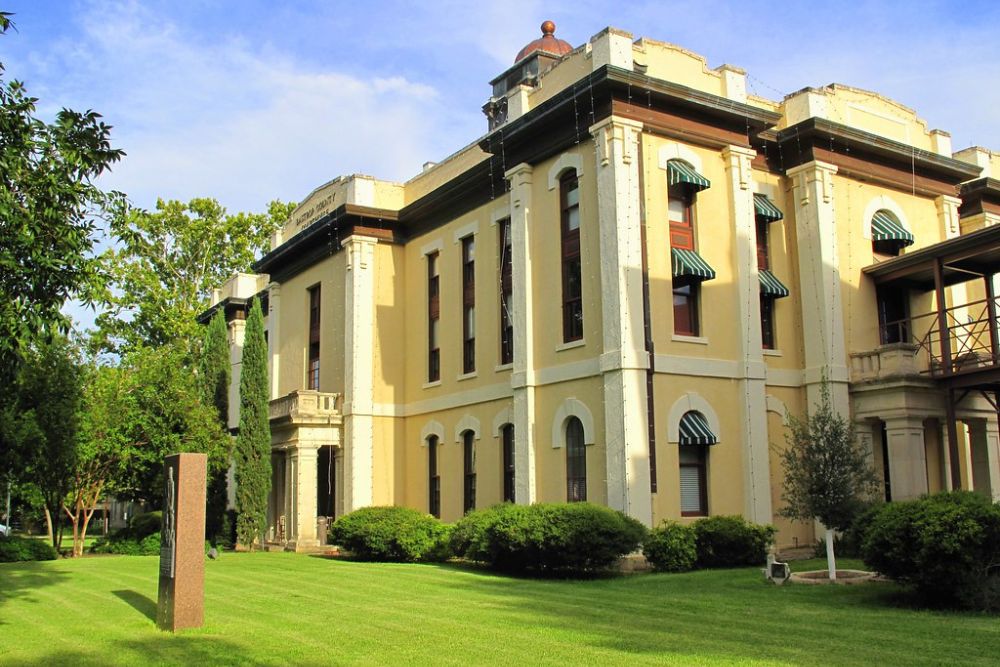
Bastrop’s courthouse square preserves the intimate feel of a 19th-century courthouse town. The Bastrop County Courthouse, built in 1883, sits on the site of earlier courthouses that have anchored this community since the 1840s. The courthouse’s modest size and simple architecture reflect the practical needs of a smaller county seat, but its central location made it the natural focal point for town development.
The courthouse square hosts regular community events and farmers’ markets that maintain the building’s role as a gathering place for local residents.
Like Travel Pug’s content? Follow us on MSN.
Carthage, Texas
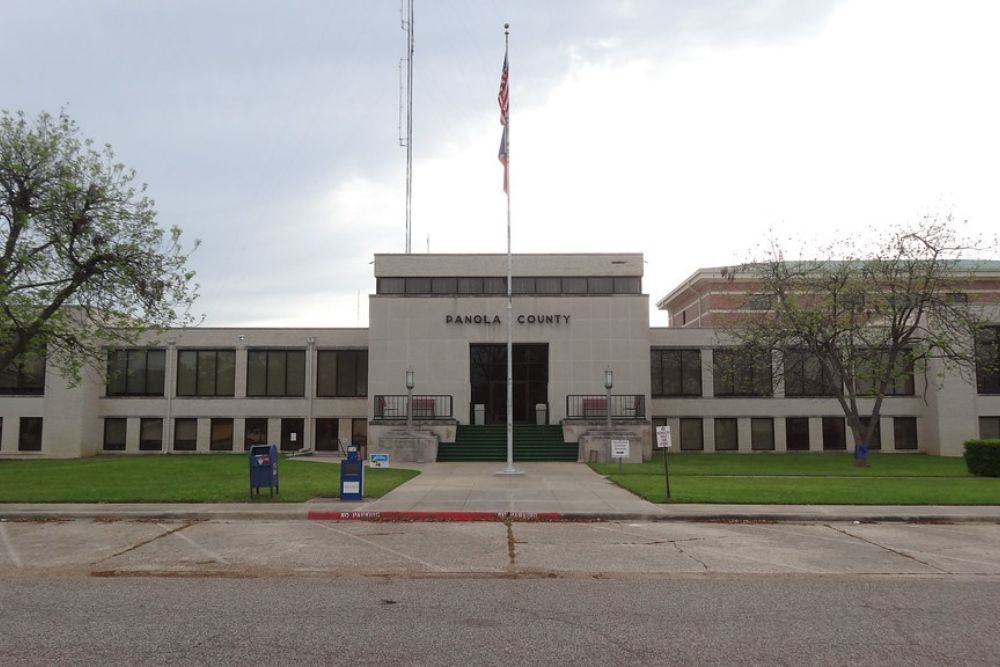
The Panola County Courthouse in Carthage showcases the grandeur that courthouse builders could achieve in the late 1800s. This 1886 Second Empire-style courthouse, with its elaborate mansard roof and decorative elements, became the centerpiece of a town that developed around the timber industry.
The courthouse square provided a natural commercial center where timber workers, farmers, and county business could intersect. Carthage’s courthouse square remains the town’s main commercial district, with many of the original buildings still serving local businesses.
Brenham, Texas
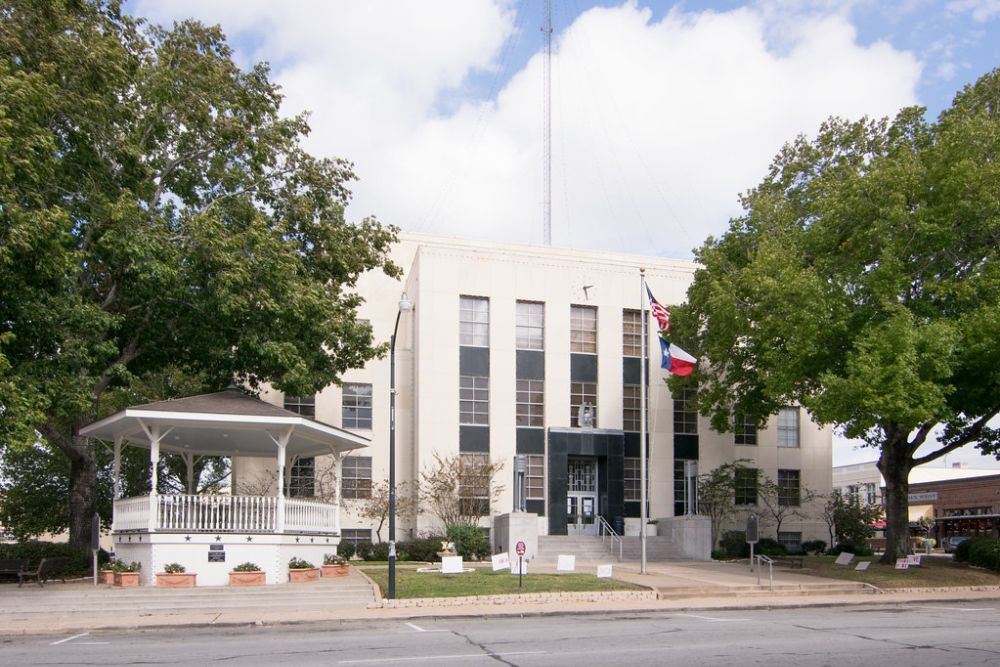
Brenham’s Washington County Courthouse demonstrates how courthouse towns could adapt and grow while maintaining their historic character. The current courthouse, built in 1939, replaced earlier structures but kept the traditional courthouse square layout that has defined Brenham since the 1840s.
The courthouse square’s central location made it the natural hub for a town that became famous for its Blue Bell Creamery and German heritage. The square continues to host community events and serves as the starting point for tours of Brenham’s historic downtown district.
Jefferson, Texas
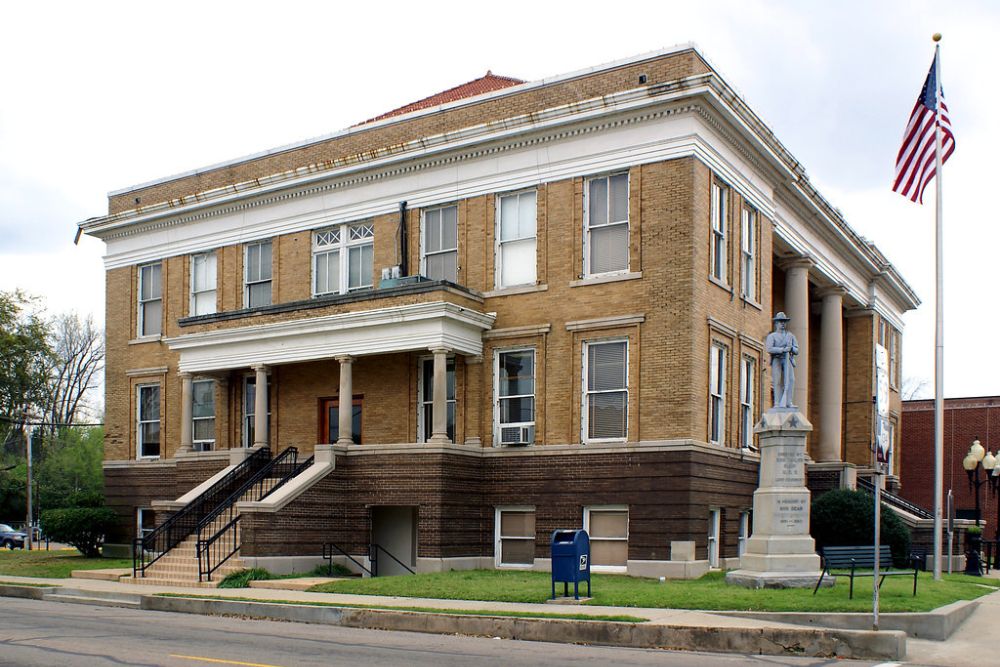
Jefferson’s courthouse square tells the story of a town that was built around river commerce but organized around its courthouse. The Marion County Courthouse, built in 1914, sits at the center of a community that grew up during the steamboat era on Big Cypress Bayou.
The courthouse square provided a civic center for a town that was already established, but the building’s prominent placement reinforced Jefferson’s role as the county seat. Today, the courthouse square anchors a historic district that attracts visitors interested in Jefferson’s role as a 19th-century river port.
Like Travel Pug’s content? Follow us on MSN.
The Enduring Legacy of America’s Courthouse Towns
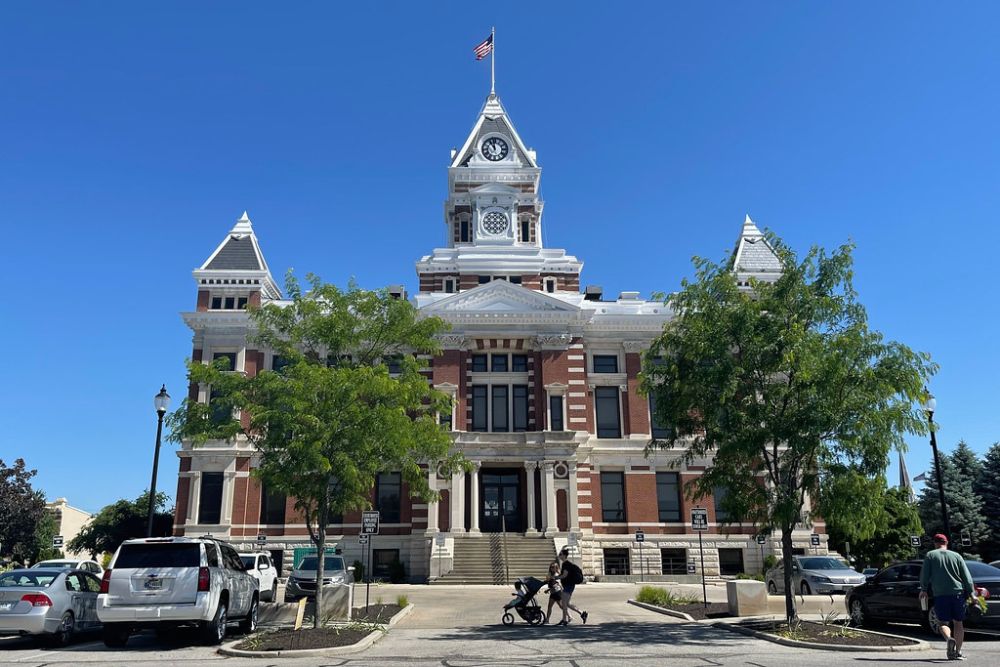
These courthouse towns represent more than just historic preservation — they show us how thoughtful civic planning can create communities that endure for generations. The courthouse square concept worked because it put government, commerce, and community life in the same place, creating natural gathering points that encouraged social interaction and economic development.
Many of these towns continue to thrive today precisely because their courthouse squares provide a sense of place and identity that suburban development often lacks. As we think about building communities for the future, these courthouse towns remind us that sometimes the old ways of organizing civic life got something fundamentally right about how people want to live and work together.
More from Travel Pug

- 20 Best Beach Towns in the Carolinas
- 13 Destinations Where Tourists Regularly Regret Their Trip
- 20 Things You Actually Get in First Class
- 20 Small Airports With Aviation Museums
- 20 Places in the U.S. That Are Perfect for a Reset Trip
Like Travel Pug’s content? Follow us on MSN.
